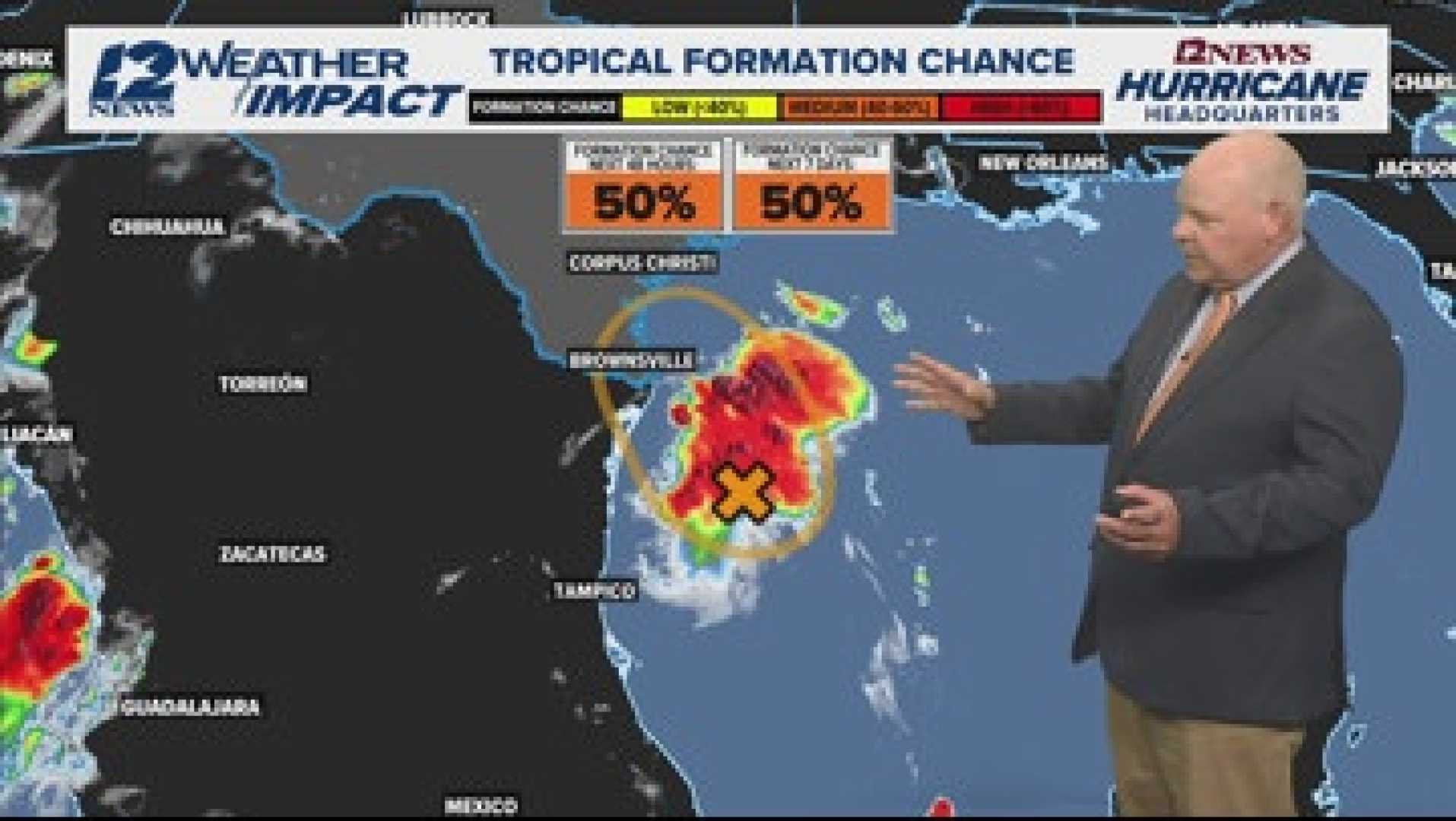News
Tropical Storm Potential Fades for Texas Coast

AUSTIN, Texas — A tropical disturbance in the Gulf of Mexico that had shown signs of organization is no longer expected to develop into a tropical storm. The National Weather Service announced Friday that Invest 98L, which was initially thought to have a 50% chance of strengthening, has moved over land, significantly diminishing its chances for further development.
The disturbance first gained attention on Thursday, August 14, as it was wrapping around a low-pressure system. Meteorologists noted that the system was moving northwest over the warmer waters of the Gulf. By Friday morning, the chance of it developing into at least a tropical depression increased to 40%.
If this system had reached tropical storm status, it would have been named “Tropical Storm Fernand.” However, the forecast models indicated that it had only 24 to 30 hours of favorable conditions over water before making landfall.
Even without becoming a full tropical storm, the system is still expected to impact the Texas coastline with thunderstorms, rough surf, and dangerous rip currents. Coastal areas from Brownsville to Houston are likely to encounter storm chances starting late Friday morning.
Rainfall amounts are predicted to be less than one inch in most regions, but localized heavy downpours could result in 1 to 2 inches in a brief period. Isolated flooding is possible in areas that receive the most significant rainfall.
As the disturbance tracks towards South Texas, onshore winds and increasing surf conditions will raise the risk of rip currents at multiple beaches. According to forecasts, locations like Boca Chica Beach and South Padre Island should prepare for moderate rip current risks.
Rip currents, which are channels of water flowing away from the shore, are notoriously deceptive. They can be difficult to spot, especially since calm water can sometimes indicate a dangerous current underneath. The National Oceanic and Atmospheric Administration states that rip currents are responsible for more beach fatalities than the average annual tornado death toll.
Beachgoers are advised to be cautious and look for signs of rip currents, such as areas of white sea foam or seaweed moving seaward. It’s recommended to swim where lifeguards are present and, if caught in a rip current, to swim parallel to the shore until safely out of the current.












